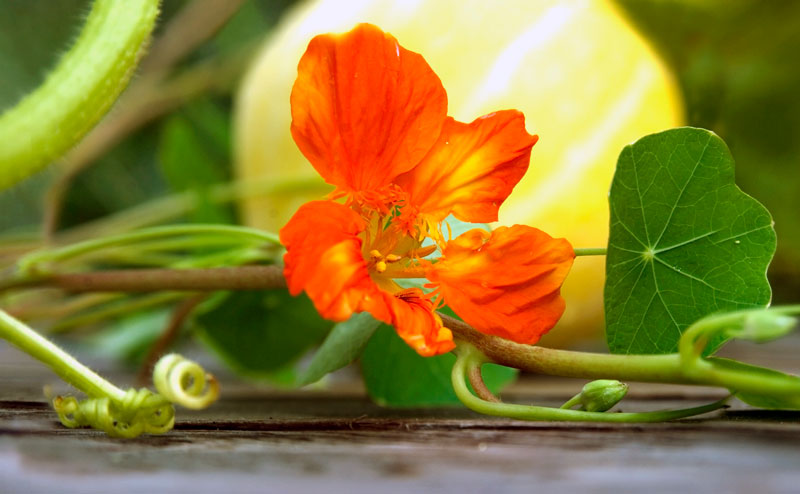Problems in your pumpkin patch? You're not the only one.
Daniel of Marble Falls writes: “I hardly get much pumpkin production, and then it looks like squash bugs or something come in and cut around the stem.”
So, let’s delve right in.
First, some tips for pumpkin production. Pumpkins need lots of water — deep watering sessions — so the roots will be thoroughly drenched. Avoid the foliage of the pumpkins; leaves tend to rot if wet for too long.
Pumpkins drain the soil of nutrients while they are growing. When your plant is about a foot, give it a boost of a fertilizer that is high in nitrogen. Then, right before it blooms, use a fertilizer high in phosphorous.
As your plants grow and vine, grab your trimmers to prune. The idea is to redirect the nutrients and water to several pumpkins to grow large and healthy. To accomplish this, choose the healthiest vines/pumpkins you want to concentrate on. Trim the blooms off the weaker vines as well as excess vines.
For nice, big, plump pumpkins, concentrate on three per plant. As they grow larger, you can spin them a little and place a piece of cardboard underneath so your pumpkins are rounder and less distorted.
Pest solutions for pumpkin patches
One of the biggest culprits is squash bugs. Squash bugs look like stink bugs, but you’ll find them on your vines and fruit. The adult squash bugs and nymphs feed on all parts of your plants.
One solution is to apply neem oil. However, you only want to apply neem oil if your chosen vines have completed the bloom cycle. Let us repeat that: Only apply neem oil if there are no blooms.
Second option: You can pick off the bugs and drop them into a container filled with soapy water. You can, of course, squish the squash bugs. They don’t sting, bite, or stink. Make sure to look under the leaf; they like to play hide and seek.
Third, you can catch them with duct tape.
Another option: Mix 1 teaspoon of dish soap with 1 quart of water in a spray bottle. Shake and spray directly on the bugs. The contact of the soapy spray is what suffocates them. Therefore, you might need to repeat.
A preventive measure is to plant nasturtium in your pumpkin patch. Nasturtium is an annual, low-growing, beautiful flower. Squash bugs run from nasturtium, making the flower a wonderful companion plant for cucurbits (winter/summer squash, zucchini, pumpkins, and gourds). And, they’re purty.
Do y’all remember Tim the Tool Man? This final solution made us think of the old TV show “Home Improvement.” Grab the hand vac you use to clean the inside of your car or your shop vac with a long extension cord. You can actually vacuum the squash bugs, and they’ll be gone in minutes. If possible, use a brush attachment to protect the vine. Be careful not to vacuum around the flowers. You might suck up the petals like one of us did (not telling who).
Now all you need to do is decide which pattern to carve on your pumpkin or which recipe to use to bake your pie.
The wonders of WD-40
We mentioned using duct tape to remove stink bugs. Another standby most of us have is WD-40. It’s not just for loosening bolts.
WD stands for Water Displacement. You can use it to keep flies off of cows and horses, remove tomato stains from clothing, clean dead bugs off your grill, and apply to fire ant bites to take away the sting.
Do you know what the basic ingredient in WD-40 is? Fish oil. We bet the Native Americans had this figured out long before we did.
Keep your souls and soles in your garden!
Remember the True Master Gardener: Jesus said, “I am the vine; my Father is the Gardener.” John 15:1
Call Bill Luedecke at The Luedecke Group Realtors at 512-577-1463 or email him at bill@texasland.net. Contact Martelle Luedecke at 512-769-3179 or luedeckephotography@gmail.com.

